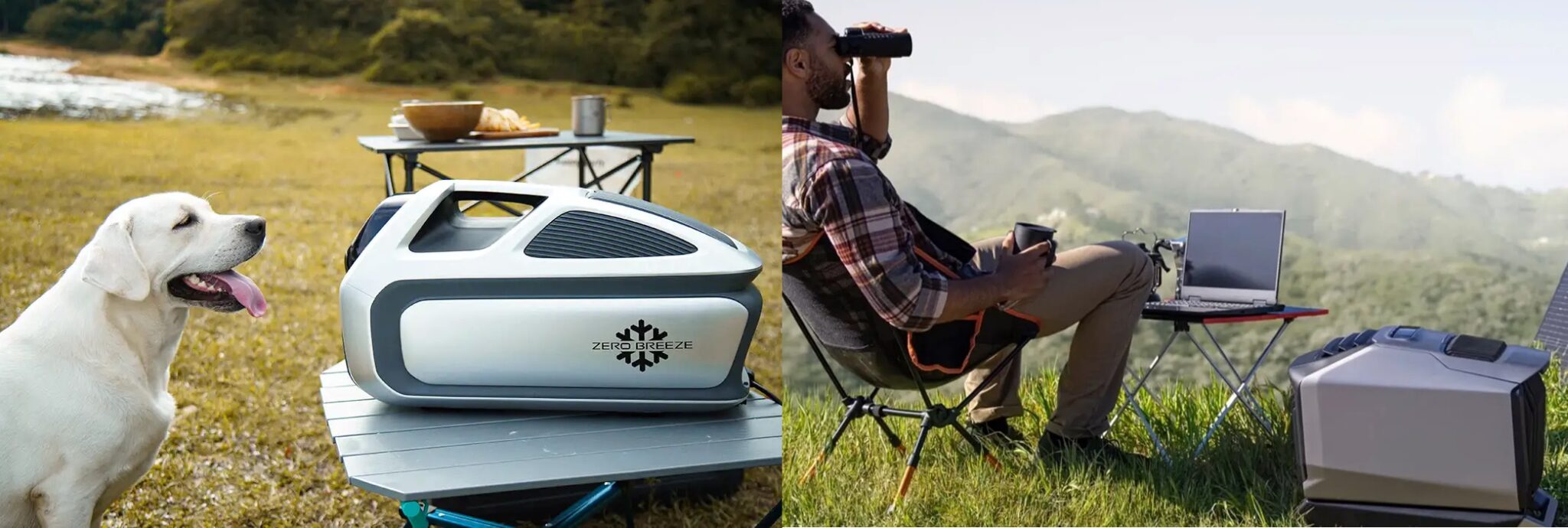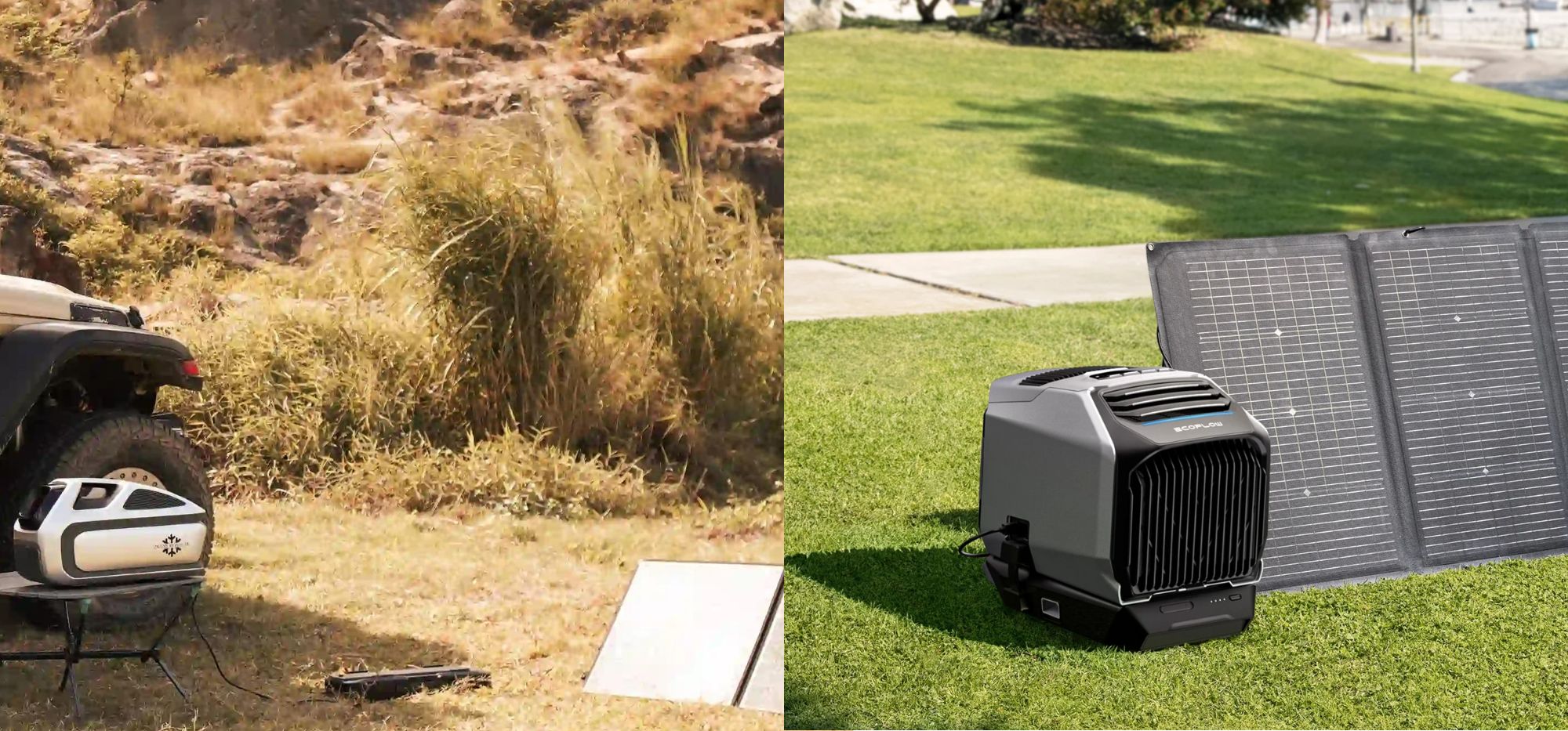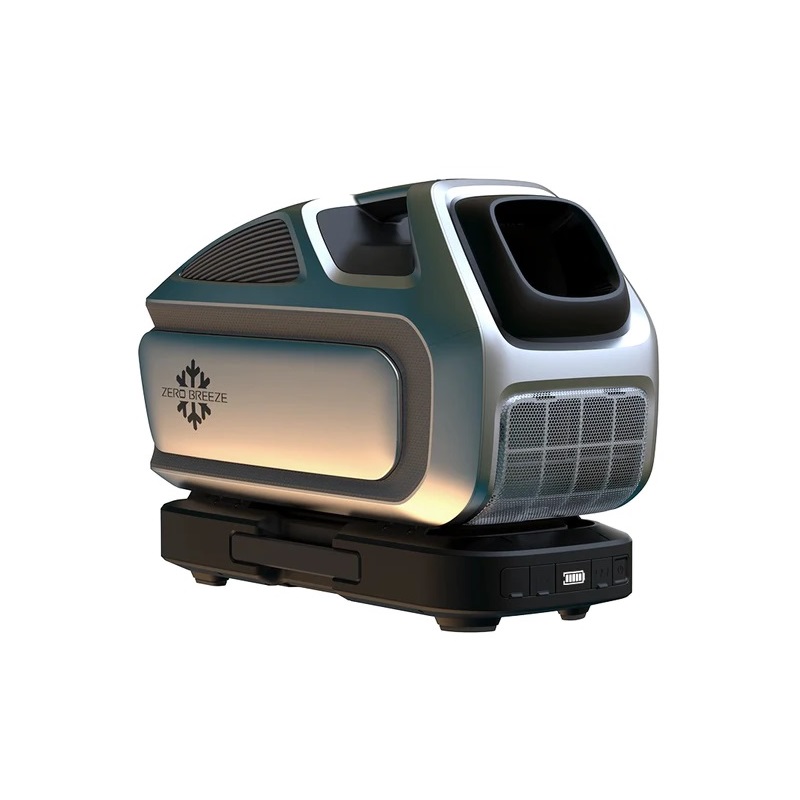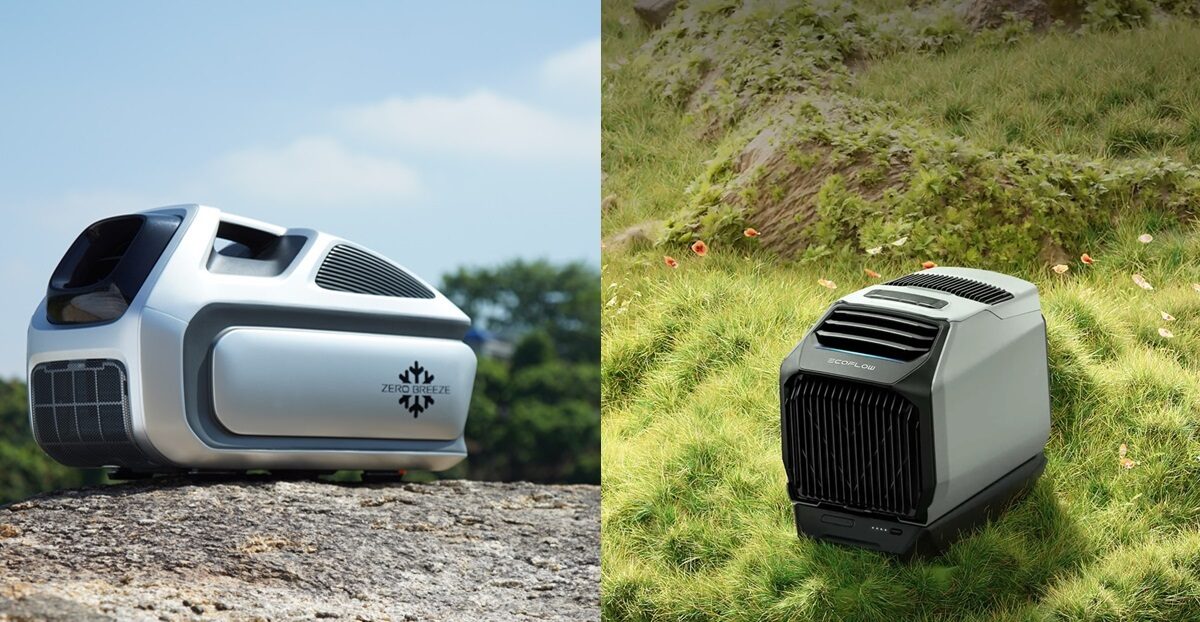In the realm of portable air conditioners, the Zero Breeze Mark 3 and EcoFlow Wave 2 stand out as formidable competitors, each offering distinctive features and design nuances. This detailed technical analysis aims to provide a thorough comparison, focusing on essential aspects such as design, cooling and heating capabilities, energy efficiency, battery options, and overall performance. By exploring these facets, we aim to guide you towards an informed decision based on your specific requirements and preferences.

Mark 3 vs EcoFlow Wave 2 Specs
| Feature | Zero Breeze Mark 3 | EcoFlow Wave 2 |
|---|---|---|
| Cooling and Heating Capacity | Cooling: 5280 BTUs /1550 Watts | Cooling: 5100 BTUs/1500W |
| Power Consumption | 550 Watts | 550 Watts |
| Portability | Weight: 19 lbs, Size: 22 x 10 x 12 inches | Net Weight: 32 lbs, Size: 20.4 x 11.7 x 13.2 inches |
| Feature Modes | 7 Modes: Rocket, Cook, Sleep, Fan, Dry, Care, Heating | Fan, Cooling (Sleep, Eco, Max, Custom), Heating (Sleep/Eco, Max, Custom) |
| Sound Level | 46 dB | 55dB |
| Price | $1,399 without battery | $1299 without battery |
| Manual | – | User Manual |
Design and Features
The Zero Breeze Mark 3 maintains the sleek design of its predecessor with subtle enhancements, such as soft-touch buttons on the front face. Its compact and sleek design, resembling a tackle box with a touch of a snowblower, weighs in at 19 pounds and measures approximately 22 x 10 x 12 inches. The front face features a thermostat displaying the air temperature.
On the other hand, the EcoFlow Wave 2 sports an angular silver and black design, measuring 20.4 x 11.7 x 13.2 inches. It is bulkier and heavier at 32 pounds. The unit features intake vents on the front and back, with an exhaust vent on the top rear. Cool (or warm in heating mode) air flows out from the top vent at the front.

Cooling and Heating Capabilities
Zero Breeze Mark 3: This portable AC boasts seven distinct modes, including Cooling, Heating, Sleep, Rocket, Dry, Fan, and Care. The cooling capacity is an impressive 5280 BTUs, making it a powerhouse designed for outdoor use.
Cool Mode – The outlet temperature drops over 20℉ in 5 minutes.
Heating Mode – The outlet temperature increases by over 20℉ in 5 minutes.
Sleep Mode – Whisper-quiet(46 dB), ideal for a serene night’s sleep. (Up to 7hrs)
Rocket Mode – Engage full blast cooling for instant relief during the hottest moments.
Dry Mode – Efficiently reduces humidity for a more comfortable atmosphere.
Fan Mode – Enjoy natural breezes while saving energy.
EcoFlow Wave 2: The unit features three modes: Cooling, Heating, and Fan. With a cooling capacity of 5100 BTUs and a heating capacity of 6100 BTUs, it is suitable for rooms up to 107 square feet.
You can operate Cooling and Heating in max, sleep, eco and custom modes.
Max Mode – Wave 2 operates at high fan speed by default, and the temperature or fan speed cannot be changed.
Sleep Mode – Wave 2 operates at low fan speed by default.
Eco Mode – Wave 2 operates for 20 minutes in cooling, then blows air for 10 minutes, and repeats the process. (Only Applicable for Cooling Mode)
Custom Mode – You can set your own temperature and fan speed.
Energy Efficiency and Eco-Friendliness
Zero Breeze Max outputs 550 Watts, featuring Type-C (100W) and Type-A QC30 (18W) ports with an output voltage of 38V – 58.8V.
EcoFlow Wave 2 in cooling mode consumes up to 550W from the mains or 459W from the battery, varying based on room temperature and set target. In standard mode, it typically operates around 400W. Both models showcase energy efficiency, with Zero Breeze offering diverse port options, while EcoFlow Wave 2 dynamically adjusts power consumption based on environmental conditions, emphasizing efficiency in portable cooling solutions.

Battery and Charging Options
Zero Breeze Mark 3 introduces a distinct battery strategy, featuring a separate 1036Wh add-on battery, available for separate purchase. This auxiliary power unit requires 2.5 hours to charge fully and accepts both DC (12-75V) and AC (100-240V) inputs. Notably, it incorporates versatile Type-C (100W) and Type-A QC30 (18W) ports, enhancing its functionality.
On the other hand, EcoFlow Wave 2 takes a unique approach with a removable 1159Wh battery, fully rechargeable within a brief 2.5-hour timeframe. The battery pack goes beyond the cooling system, offering a USB-C port for device charging, along with two USB-A ports and a 12V DC socket. The Wave 2 further diversifies its charging options, supporting AC, DC, and solar inputs, contributing to a comprehensive and adaptable charging ecosystem.
For optimal cooling or heating modes, the Wave 2 necessitates a power station, an AC supply, or the removable wave 2 add-on battery source that costs $900. If you intend to power the Wave2 directly through the solar panel or an external 48V battery bank, you will be limited to using only the fan mode, with control over the fan speed. Unfortunately, switching to any other operational modes is not possible.
| Zero Breeze Mark 3 | EcoFlow Wave 2 | |
| DC | 12-75V DC Charging | 11-60V DC Charging |
| AC | 100-240V AC Charging | 100-240V AC Charging |
| Car Charging | 12V/24V cigarette port Charging | 12/24V cigarette port Charging |
| Solar Panel | 12-75V, 500W MPPT Charging | 11-60V, 13A, 400W Max Charging |
| Add-on Accesories | Available (see on Indiegogo page) | Wave 2 Battery |

Quiet Operation
Both units maintain relatively quiet operation, with the Zero Breeze Mark 3 operating at 46 dB and the EcoFlow Wave 2 at 55 dB. The Mark 3 also features a sleep-friendly mode for minimal noise during nighttime operation.
Zero Breeze Mark 3 vs EcoFlow Wave 2 – Which One To Choose?

In summary, the Zero Breeze Mark 3 and EcoFlow Wave 2 emerge as strong contenders, each with its unique strengths. The Mark 3 excels in design, portability, and versatile cooling modes, making it an excellent choice for individuals frequently on the move who prioritize a sleek and compact solution. On the other hand, the Wave 2 impresses with robust construction, efficient cooling capabilities, and a diverse charging ecosystem, catering to a broader range of environments and power preferences.
Choosing between the two depends on individual priorities. If portability, sleek design, and versatile cooling modes are paramount, the Mark 3 is an ideal fit. However, for those valuing robust construction, efficient cooling, and a comprehensive charging system, the Wave 2 stands out. Evaluate your specific needs, considering factors such as cost, cooling requirements, mobility requirements, and power sources, to make a well-informed decision tailored to your unique circumstances.
| PREVIEW | PRODUCT | |

|
Zero Breeze Mark 3 | Buy Here |

|
EcoFlow Wave 2 | Buy Here |

